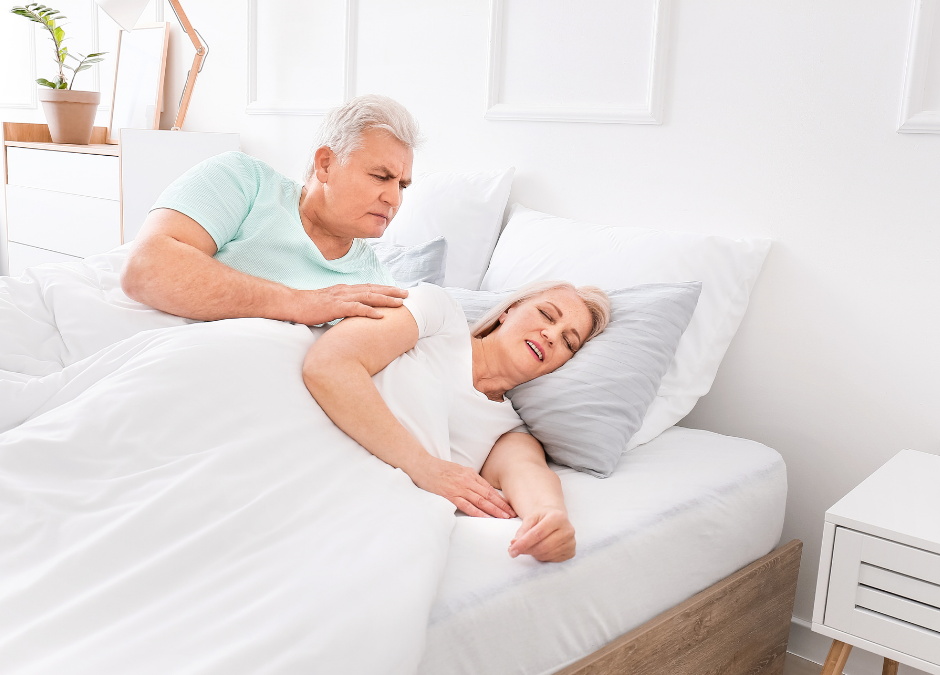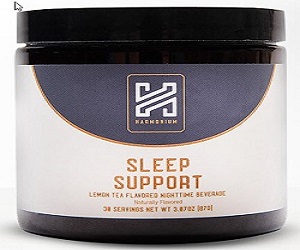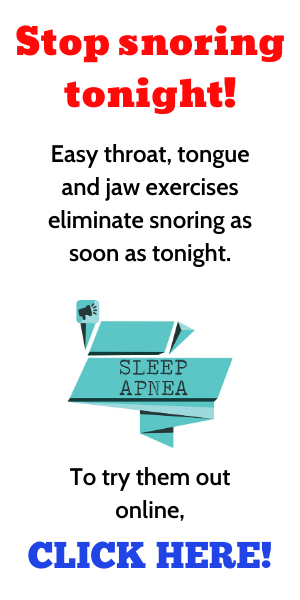To check if you have sleep apnea or not, there are a number of different ways to detect and diagnose it.
How do you detect sleep apnea at home? There are home sleep tests that you can take to measure your blood oxygen levels, heart rate, airflow, and breathing patterns. However, these are only simplified tests. If the doctor detects anything unusual with your test results, you may still be advised to take a nocturnal polysomnography, which gives a better look into your possible sleep apnea.
Sleep apnea is a serious condition that needs to be diagnosed properly, so that the proper treatment can be applied.
As you read further, you’ll understand what the common symptoms are, how sleep apnea is diagnosed, and what the possible treatments are.
How is Sleep Apnea Diagnosed?
If you suspect that you have sleep apnea, the doctor would most likely recommend you to a sleep specialist. The specialist would then run some tests to figure out whether you do have sleep apnea, and what kind of sleep apnea it is. Your treatment will depend on how these tests turn out.
The tests would usually have to be done overnight, so the specialist might recommend having you stay for the night. There may be instances when a home sleep testing could also be done, depending on the case.
Here are the two general types of tests that are done to diagnose sleep apnea:
Home sleep tests
There are portable monitoring devices you can take home. These can check your airflow, blood oxygen level, breathing patterns, and heart rate while you sleep.
If the test shows any abnormality in your vitals while you sleep, your doctor can recommend different types of treatment depending on what these tests say.
However, these home sleep tests are simplified and do not really detect all sleep apnea cases. This is why after going through a home sleep test, the doctor may still end up recommending a more advanced test to get a clearer picture of your condition.
Nocturnal polysomnography
Nocturnal polysomnography is a more elaborate version of portable monitoring devices used for home sleep tests. This would have to be done at a sleep study center though, and cannot be done at home.
This type of test is more detailed, and can monitor brain, heart and lung activity, as well as check arm and leg movements, breathing patterns, and blood oxygen levels while you sleep.
Of course, it also boils down to the symptoms that you show. These are, after all, what would lead to you deciding to go to the doctor to check if you have sleep apnea. This is why it is also important to understand what the most common symptoms of sleep apnea are.
What are the Symptoms of Sleep Apnea?
You can tell that someone might have sleep apnea because of the following symptoms:
- Loud snoring
- Choking, coughing, or gasping for air while sleeping
- Stopping from breathing while sleeping
- Waking up with a dry mouth
- Difficulty staying asleep
- Morning headache or nausea
- Excessive sleepiness during daytime
- Lack of focus or difficulty in paying attention during the day
- Irritability and mood swings
- Forgetfulness
Although snoring is one of the major indicators of sleep apnea, just because someone snores does not mean they have the condition. It is best to look for a combination of the symptoms above.
If snoring is the only symptom you’re seeing, then consult a doctor just the same so that you can find out where the problem potentially comes from.
How is Sleep Apnea Treated?
Sleep apnea can be treated in 3 different ways — through changes in lifestyle, through therapy, and through surgery.
Lifestyle changes
Sleep apnea can be an effect of your lifestyle, so a few changes would have to be made if you want to deal with it effectively.
- Try to lose weight. Excess fat around the throat can cause your airways to become narrower. This can make breathing more difficult. Switch to a healthier diet and exercise regularly.
- Avoid alcohol and other forms of sedatives. Any form of sedative relaxes your tongue and throat muscles. When this happens, the tissues around your throat collapse into your airway. This makes the airways narrower, making it harder for air to pass.
- Sleep on your side. Even if you did not take any sedatives, lying on your back can still cause your throat tissues to collapse against your airway. This is why it is ideal to sleep on your side instead. If you are not comfortable doing so, you can buy a body pillow to stay comfortable.
- Stop smoking. Smoking can cause inflammation around your nasal passages and throat. This can become an obstruction against the proper flow of air.
Of course, lifestyle changes are sometimes not enough to get rid of sleep apnea, especially for more advanced states. This is why some doctors will recommend therapy.
Therapies
A number of devices and machines can be used to aide in therapy for sleep apnea.
CPAP, or continuous positive airway pressure, is the most common machine used for moderate to severe sleep apnea. It requires you to wear a mask attached to the machine, which delivers air pressure as you sleep. This opens up your airways, making it easier to breathe in and out.
Of course, wearing a mask in bed can be quite uncomfortable. Although the mask is adjustable, some sleep apnea patients look for other alternatives.
It’s a good thing there are other airway pressure devices you can try, like the BPAP, or bilevel positive airway pressure. This type of machine sends in more air pressure each time you inhale, and less pressure when you exhale.
There are also oral appliances that keep your throat open while you sleep. These are easier to use compared to the CPAP, but the CPAP still proves to be more effective.
You might also have to go through a number of oral appliances before finding the one that fits you best. From there, you may have to come back regularly to ensure proper fit.
Surgery
It is recommended for sleep apnea patients to try a myriad of treatments for at least 3 months or so. When all else fails, surgery is the final solution.
Here are some of the surgical procedures done to get rid of sleep apnea:
- Tissue removal
This procedure is called uvulopalatopharyngoplasty. Basically, the doctor removes some of the tissue from the rear of your mouth and around the top of your throat. The doctor may also decide to remove your adenoids and tonsils.
This can help remove any obstructions that are causing you to snore, although it is not as effective as using a CPAP. This can be a good option though, if you are not comfortable wearing oral devices and other similar machines.
- Tissue shrinkage
If you don’t like the idea of removing some of the tissues in your throat area, then you also have the option of shrinking them via radiofrequency ablation. This is recommended for those who have mild to moderate sleep apnea.
Although the effect is basically the same as tissue removal, at least you won’t have to go through surgery for this.
- Jaw repositioning
When the space between the tongue and soft palate is too narrow for air to properly pass through, it is possible to surgically move the jaw forward to widen that opening. This procedure is referred to as maxillomandibular advancement.
- Tracheostomy
A tracheostomy is a procedure where a new air passageway is created. This is only done for those whose sleep apnea has become life-threatening.
How is this done?
The surgeon will create an opening in your neck where a plastic or metal tube is inserted. This tube is the air will pass in and out.
During the day, this tube will be covered. But at night, this will be opened up so that you can breathe through it while you sleep, bypassing the blocked air passage that is usually found on the upper part of your throat.
Other treatments
There are a number of other treatments available but still require more research into how they really work for sleep apnea.
Implants, for example, are an option. This involves having plastic rods implanted into your soft palate to make sure the airways are kept open.
Nerve stimulation is another kind of treatment where a stimulator is inserted around the nerves controlling your tongue movement. Because of the added stimulation, the tongue is kept at a position that does not block the airways while sleeping.
Bother of these treatments require surgery, although in both cases, more research would have to be done to properly gauge how effective they are.
Related Questions
Can smartwatches detect sleep apnea?
Smartwatches from Apple, Fitbit and Garmin can actually help detect sleep apnea. These devices can effectively track your sleep patterns, giving your doctor an initial look at how your body acts while you sleep.
How long do you need to sleep for a sleep study?
To complete a sleep study, you don’t really need to sleep for a full eight hours. The test can track your sleeping patterns for a few hours, and the doctor can have enough data to know what your recommended next steps should be.




